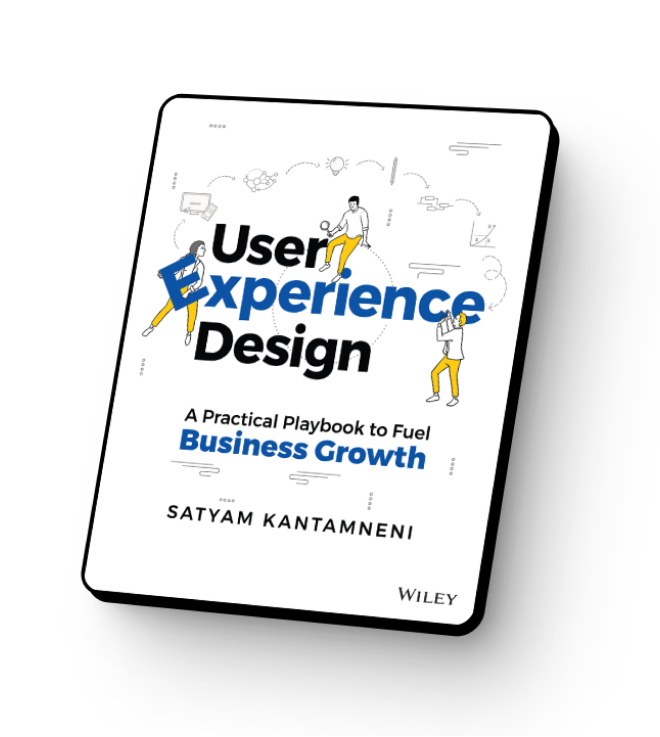User research can be the most significant value-driving investment a company makes, so why isn’t it standard in every design process? Allow us to dispel some user research rumors and highlight how awesome it is.
It’s frustrating when your product misses the mark — conversions lag, users drop off, and growth stalls. So you start playing the ‘What if’ game.
What if you had directly engaged target users first?
What if you asked them the questions you have right now?
What if you would’ve made different decisions based on what users wanted?
Just because you haven’t utilized user research before doesn’t mean you can’t start now. And if you’re focused on improving any metric to share with stakeholders, it’s crucial that you do.
User research allows you to create a product that resonates and therefore is a critical fuel for growth. But it requires commitment across your company, starting with you.
Once embedded into your DNA, user research becomes an invaluable tool that delivers competitive advantages, including improved product-market fit, streamlined development cycles, increased customer loyalty, and optimized resource allocation.
It all starts with putting users first. Are you ready to transform outcomes through insights?
Don’t Let These Common Myths Stop You From Doing User Research
We get it: User research is an investment and you want to get your product to market quickly. While that’s a common reason many leaders decide to forgo gaining user insights, there are other misconceptions about user research that may be holding you back.
You Have to Start at Ground Zero
The first myth is that it has to be done prior to everything else — discovery, wireframing, everything. The entire process has to stop for user research to be conducted, analyzed, and implemented. The truth is, user research is not a prerequisite to the journey, but a critical, ongoing process capable of refining your product roadmap at any stage. Decisions based on sound research lead to better product-market fit, lower project risk, and enhanced customer loyalty.
There’s Just Not Enough Time
Yes, research requires time. But assuming that it would take months or even a year to gather insights to guide your decision-making is false. While the time and effort invested in user research might pause other parts of the design process momentarily, the strategic insights gained can expedite the development cycle and optimize resource allocation, proving to be a worthwhile tradeoff in the end. And, according to the Interaction Design Foundation, product development cycles can be reduced by 33 to 50% when UX research happens during a project’s concept phase.
Your Experience and Industry Knowledge is Enough to Inform Your UX
It’s true you have a lot of experience, as well as qualified people on your team who can fill in the shoes of the user because of their industry or domain knowledge. But user research is not just about understanding the user’s needs — it’s about understanding the user better than anyone else. Regardless of your wealth of experience or abundance of industry insights, trying to tap into the user’s brain and heart without thorough research can lead to biases in product design and development.
Neglecting User Research Comes at a Cost to Your Bottom Line
Launching a new product or business without proper user research is unwise and often detrimental. Unlike exploring with a map to guide you, you’ll wander without valuable insights from potential users. Their feedback provides a crucial roadmap, pointing out pitfalls and routes to optimize.
Without this essential input, you operate at an avoidable disadvantage and lose money while you’re at it. Resources are wasted on assumptions instead of evidence-based solutions. Misguided features bloat timelines and budgets. Unvetted concepts flop in the real world, requiring expensive pivots. As Dr. Susan Weinschenk says in The ROI of User Experience, “The cost of fixing an error after development is 100x that of fixing it before development.”
Need we say more? On to the good stuff.
Investing in User Research is More Valuable Than You Realize
Several key advantages arise from dedicating time to user research. First, it enables you to let go of preconceived limitations, unleashing creativity. Then, you can commit fully to enhancing the user experience in innovative ways. Finally, the research approach demonstrates respect for users that builds trust and advocacy.
Let’s explore how performing strategic user research empowers you to shatter market expectations, pioneer transformative experiences, and earn users’ enduring loyalty.
Perfected Product-Market Fit
Conducting user research enables you to precisely define and focus your target market, rather than relying on assumptions. This includes clarifying your ideal audience and identifying prospective business partners that align with customer needs.
For example, an entrepreneur starting a new Online Travel Agency (OTA) may initially think appealing to all travelers booking hotels is prudent. However, detailed user interviews and surveys could uncover a distinct opportunity. The research might reveal an underserved niche of boutique hotel travelers seeking unique, curated experiences.
This group represents a better initial target market for several reasons. These travelers need help discovering relevant boutique options and have trouble finding them on mainstream OTAs. Boutique hotels would also be eager to partner with an OTA catering specifically to this audience. By specializing, the OTA could provide exceptional value to both customers and hotels in this segment.
Data-Driven Decision Making
User research also plays a pivotal role in decision-making. Teams often separate into Subjectivity Squads, or groups with aligning opinions. This hampers their ability to prioritize features and follow a clear development approach. User research eliminates the guesswork; it presents an objective way to identify pressing user needs and devise an efficient strategy.
For example, say your team is deciding whether to prioritize implementing a new onboarding flow or adding more advanced features for power users. Without user research, your debate hinges on assumptions and opinions. One Subjectivity Squad advocates for onboarding, believing it will make the product more accessible. The other Subjectivity Squad pushes for advanced features to satisfy and retain existing pro users.
By interviewing and surveying both new and experienced users, you discover onboarding is a major pain point. New users are overwhelmed and churn at high rates. Power users, on the other hand, are quite satisfied with the core feature set. With this user insight, the team unanimously prioritizes rebuilding onboarding first. The research provided objective evidence to break the stalemate and align the team.
Compelling Customer Satisfaction
Building what users want, not just what the internal stakeholders desire, leads to higher customer satisfaction and loyalty. By mapping user insights through rigorous research, you can develop products that solve real problems for your users, thereby increasing customer satisfaction and product acceptance.
Picture this: You are building a mobile app for grocery delivery. You envisioned advanced features like predicting future orders and auto-checkout. Yet when you interviewed and observed target users, you uncovered different needs.
Users didn’t want fancy predictive features. They wanted to easily find their items and understand the delivery fee structures. So, you focus on an intuitive categorized layout and transparent flat-rate delivery pricing.
Though simple, these changes based on user research dramatically increase customer satisfaction. Reviews highlight the app’s ease of use and clarity compared to competitors. User retention doubles and order frequency increases by 30%. Winner, winner!
With user research, that scenario is within your reach.
User Research: An Indisputable Tool for Successful UX Design
As user-centric products continue to dominate the market and experience transformation takes hold, your goal is to craft efficient and dynamic user experiences. This is unrealistic to achieve if you fail to understand the user’s perspective and priorities.
Not to mention, if your product wants to offer a high-quality user experience and maintain credibility, you simply can’t go without gathering insights from your users. There is no UX without U, the User.
By taking the time to understand your users, their needs, their preferences, and their pain points, you aren’t just improving your product, you’re building business success.
–> Talk to us for Fast, Agile, and Actionable Insights through Usability Testing <–
Rapid Usability Testing One Pager (PDF)


